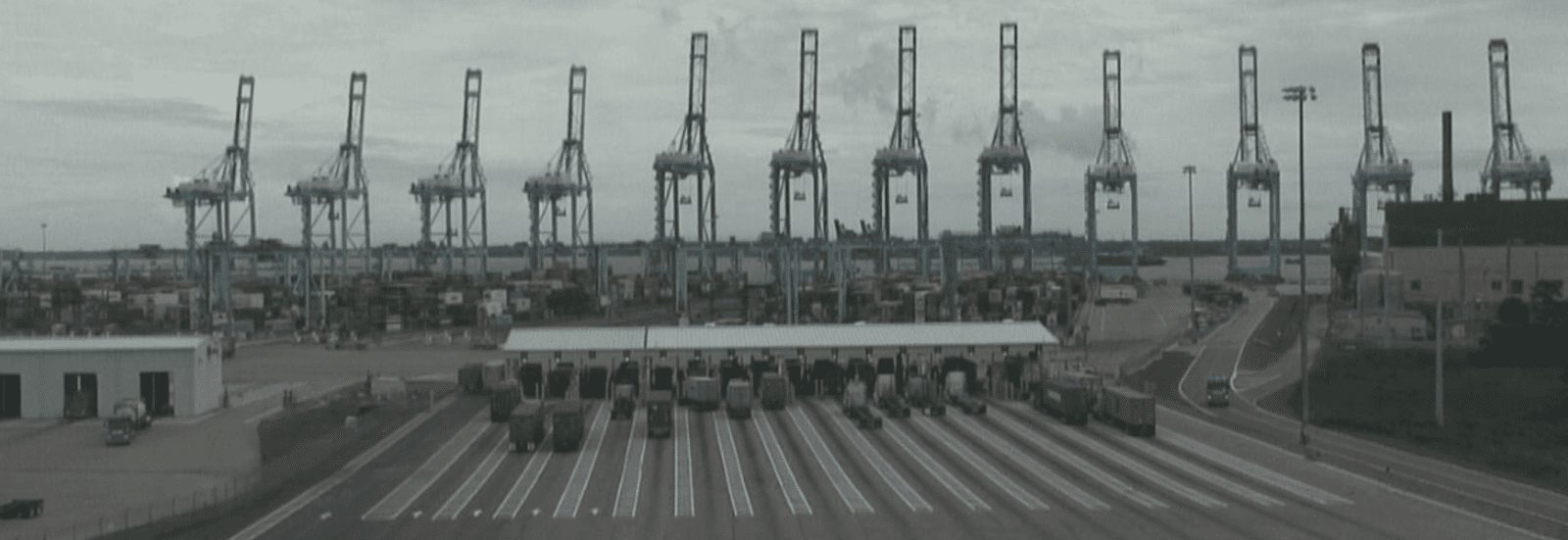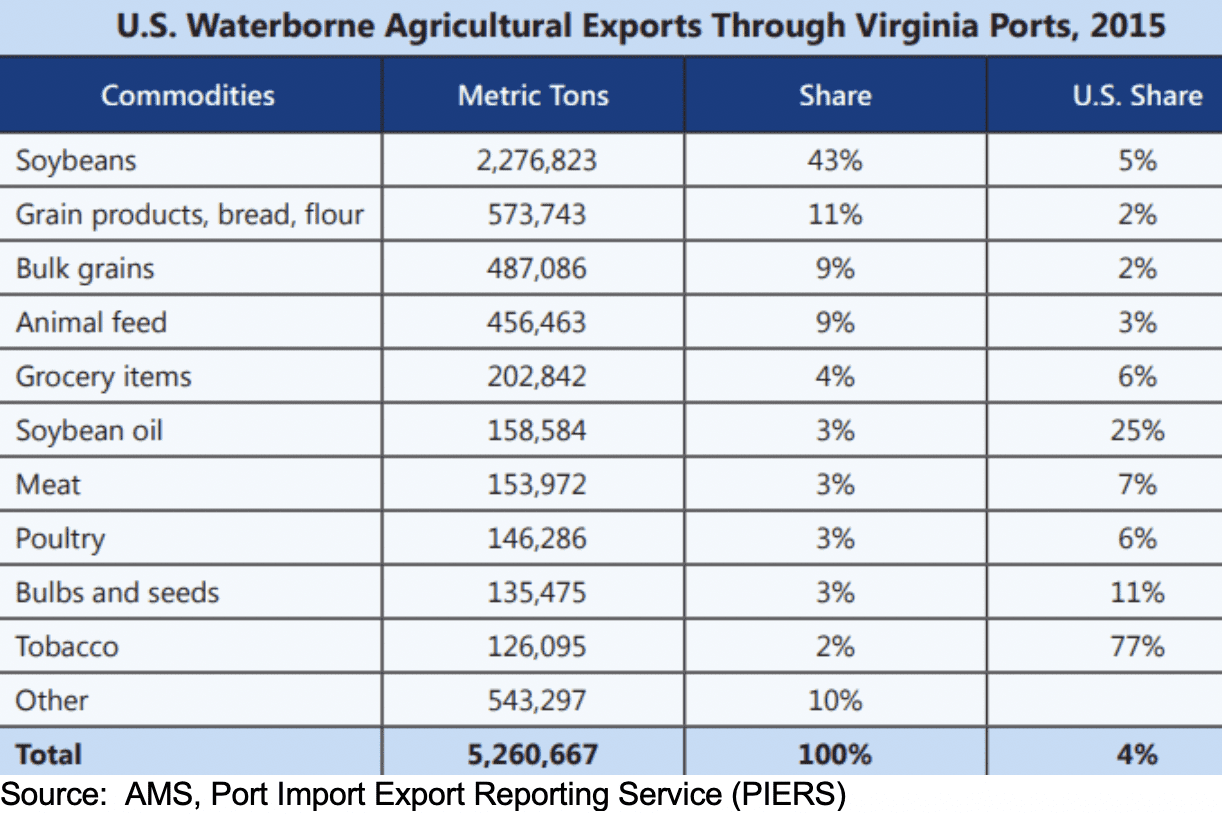The U.S. Department of Agriculture (USDA) reported that nearly 16% of U.S. containerized grain exports move through the Port of Virginia. The two-year renovation and expansion project at the Virginia International Gateway (VIG) almost doubled overall container stack capacity, power plugs for refrigerated cargo, and on-dock rail capacity as well as added four ship-to-shore gantry cranes. The port’s goal is to increase container throughput via on-dock rail to 40% of total volume. Most importantly for agriculture, the channels were deepened, which allows more weight to be loaded onto a vessel that in turn lowers ocean freight cost on a per metric ton basis.

The project is clearly being done to improve the port’s competitiveness in servicing container vessels and improving safety. The modern port creates opportunity not only for existing facilities, but also for potential new facilities and locations not on the water. In public infrastructure projects, everyone is encouraged to explore opportunities to capitalize on the new infrastructure. So, although the primary focus is to improve containerize volumes and safety, bulk commodities also benefit from the modernization.
Although most soybeans are exported in a bulk transportation system, it should be noted that containerized exports of soybeans do play an important role in the soybean export market. Not all countries have the need to accept a Panamax or approximately 52,000 metric tons at one time. Receiving containers that can weigh out near 22 metric tons has very distinct advantages for smaller operations. The receiver can use the containers for storage and does not have to invest in a bulk handling system.
The more containers that enter an area, the higher the odds of securing a supply of containers to fill for export. Of course, the largest challenge for exporting soybeans and soybean meal by container is securing a supply of containers to fill. The imported products in containers typically are much higher value than the exports and pay a much higher freight rate than the return trip. The ocean carrier’s first goal is to return the container to the shipper to secure the front haul rate. If the ocean carriers can secure a backhaul rate without slowing down the return process, the ocean carrier will take the money.

For a commodity that is dependent on the export market, transportation infrastructure projects are very important to the farmer’s profit margin. Any transportation infrastructure project should be examined for the opportunities that could be uncovered.